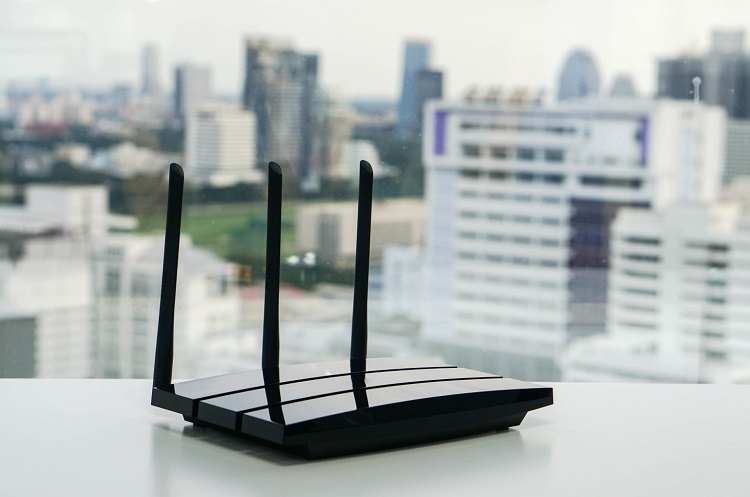What’s the Difference Between a Modem and a Router

Modems and routers are boxy devices with cables coming in and out and LEDs blinking. Moreover, they serve very similar purpose – they’re there to connect your device(s) to the internet. It’s no wonder that some people find it hard to differentiate between the two.
However, they have different roles when it comes to establishing and directing the communication between your device(s) and the internet. In this article, you’ll find out which duties the modem performs and which ones belong to the router. We’ll also cover the popular 2-in-1 modem/router solutions and mesh networks.
Modem
Back in the days when the internet was in its infancy, there was only the modem. It was an internal device which connected the computer to the phone line. With the advent of cable and DSL services, modems changed in appearance, becoming external devices. Their main function, however, remained unchanged.
Modem (Modulator Demodulator) is there to demodulate the incoming signal from your ISP and to modulate outgoing signal from your computer to the ISP. Most of them have only one Ethernet port for wired connection to one device, either a computer or a router (if you have a network of computers/devices). The modem is, unlike the router, necessary for internet connection.

The most common features include an Ethernet port, coaxial connector (or phone jack if it’s a DSL modem), on/off switch, and power jack. These are mostly found on the back side of the modem. The front side’s equipped with a series of LEDs. These might include on/off, in, out, online and, depending on the model, other indicators.
Router
The router is a more recent development, which rose to prominence with high-speed internet and the need for local networks. They work in between your modem and computer (and other devices), serving as a data terminals of sorts. Routers make sure the right data reaches the right device.
The primary function of a router is to receive the incoming data from the modem, package it, and send it to the appropriate device, and vice versa. To do that, the router creates a LAN (local area network) and assigns an internal IP address to each connected device. On the flip side, the data going out from the router and the modem will have a singular external IP address (the address your ISP assigned to your modem). Within the LAN, all devices communicate and exchange data via the router.
Unlike the modem, the router has multiple Ethernet ports, as it communicates with multiple devices at once. Also, it will have the WAN (wide area network) socket which connects it to the modem. The status LEDs are located in the front.
Modern routers will also frequently sport antenna/s for wireless connection. That’s the most common way smartphones and tablets connect to the internet. The vast majority of models will have one or two external antennas, and others have internal antenna/s. Models with more than two antennas are usually considerably more expensive.

2-in-1 Modem Router
There are also 2-in-1 devices which combine the functions and properties of modem and router in one unit. They perform duties of both devices simultaneously. While quite handy if you want to eliminate cable clutter, it could be a real pain in the neck when a 2-in-1 modem router breaks down.
2 in 1 systems connect your devices to the ISP in a more direct and streamlined way. They look like a regular modem, though they also pack a router on the inside. On the back side, they will have all the jacks and ports of a modem and a router, including multiple Ethernet ports for wired connections to multiple devices. In the front, they might include additional indicators, such as channel (2.4GHz or 5GHz). Also, they’ll have antennas for wireless connection (internal or external).
Mesh
Sometimes, one single router is just not enough to extend quality wireless signal to the entire house with. The reasons may include impenetrable walls, poor router positioning, strong signals from your neighbor’s network, and many more. That’s where mesh-based networks step in.
To set up a mesh network, you’ll need to purchase individual signal extenders and connect them to the router. The most common way to do this is wirelessly. The downside of the wireless connection is that the individual node picks up an already weakened signal for further distribution to the devices. You could also connect the nodes to the router via Ethernet cable to preserve the signal strength.
The neat thing about mesh networks is the seamless transition of wireless devices from one node to another. You can also buy the nodes in kits (the most common packages have three individual units). Mesh networks offer great ease of use but lack customization options, as they’re mostly controlled by mobile apps.
Conclusion
Modems and routers, while working on a common goal and looking quite similar, have different tasks. Modems receive and send data to the internet while the routers make sure each device within your home network gets the right data in and out. Hopefully, this article was helpful and informative to you. If you have any questions, do not hesitate to ask in the comments section below.
















